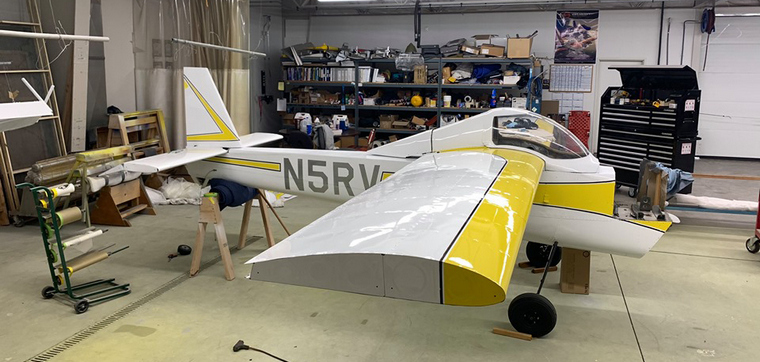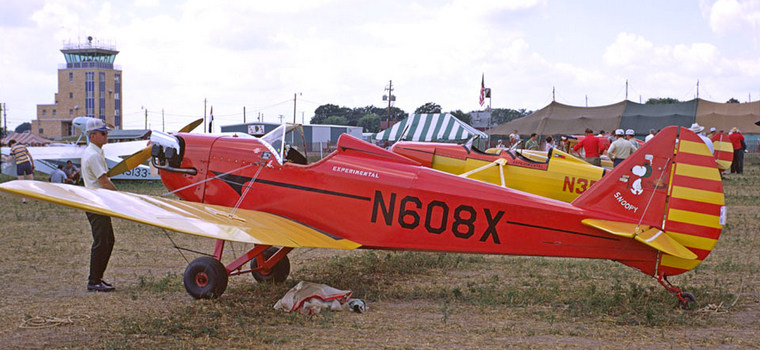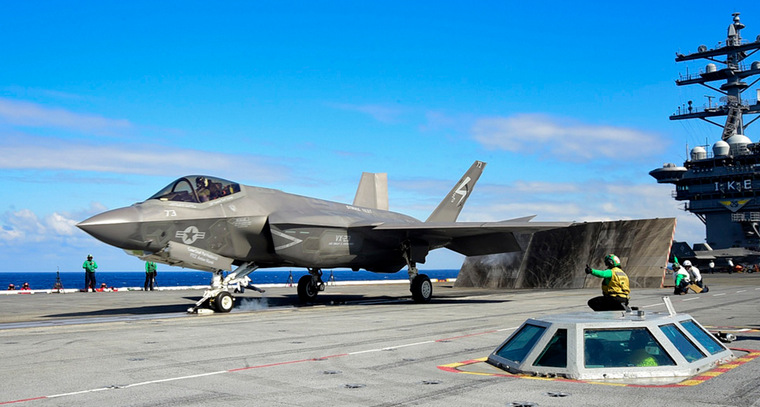








MIDWEEK UPDATE 30 JULY 2019Plan Your Weekend……...Forthcoming Events……..Aviation News Worldwide Incidents and Accidents……This Week in Aviation History      21-31: SAC Unlimited World Championships in France. Contact Annie Boon e-mail: chunge@mweb.co.za 24: Bethlehem Airshow. Contact Stephan Fourie e-mail: fouriesj1491@gmail.com 26-31: SAPFA World Precision Flying Championships - Castellon Spain. Contact Hans Schwebel cell: 082 656 3005 e-mail: hans.s@britsgranite.co.za   7: SAAF Museum Airshow AFB Zwartkop. For more information Mark Kelbrick Cell 082 413 7577 or E-mail: markkelbrick@yahoo.com 7: SAPFA Grand Central Fun Rally - Grand Central Airport. Contact Rob Jonkers cell: 082 804 7032 e-mail: rob@aerosud.co.za 14: Vans RV Fly-in to Kitty Hawk. Contact Frank van Heerden e-mail: frankvh@sandown.co.za. website: www.fakt.co.za 8-13: World ANR Championships - Santa Cruz Portugal - Contact Hans Schwebel e-mail: hans.s@britsgranite.co.za cell: 082 656 3005 21-22: PMS South Africa is proud to present the South African Nationals 2019, hosted by IPMS Cape Peninsula. This is the premier event on the South African scale modelling calendar and promises to attract the cream of the crop in scale plastic modelling. 28: Wings and Wheels at Mathjbeng (Welkom) Contact Dirk Smit 082 558 3914   MATT CHAPMAN TO RETIRE FROM AIR SHOW FLYING AFTER 37 SEASONS  Top air show pilot and long time Oshkosh performer Matt Chapman has announced that he will be retiring from air show flying at the end of the 2019 season. Photo © MachPointOneAviation.com. Inspired to fly aerobatics at the age of 16 in England, Matt Chapman took his first aerobatic ride with his hero, Neil Williams, in a Bücker Jungmann. Soon after, Matt moved back to the United States and started flight training, still with the dream of one day performing in air shows. Matt started flying air shows in a Pitts that he personally built and then moved onto a Laser that he also constructed. The 1990s were great to Matt, with him introducing another new airplane to his routine, the CAP 231EX. The Laser took him to the win in the 1994 IAC Championships, and the CAP took Matt to multiple World Aerobatic Championships where he was the top-placing American in 1998, finishing third in the world. In 1996, Matt performed at his first EAA AirVenture Oshkosh in that same blue, green, and white CAP. Thirteen years ago, Matt's relationship with Embry-Riddle Aeronautical University began, and ERAU has continued to support him at more than a dozen shows per year since. Starting at AirVenture Oshkosh 2015, a new Extra 330LX replaced Matt's famous CAP 580 and has been seen at shows all across the United States. Matt has also been seen in the skies as part of the 4CE aerobatic team at many shows in North America, and he appeared in the sky over Oshkosh in 2017 with the U.S. Navy Blue Angels. Still an avid RC pilot to this day, Matt's CAP 580 was also created as a 1/3-scale model by Great Planes, and many of those models can be seen at AMA clubs across the world. While he is stepping away from performing in air shows, Matt will continue to fly the Boeing 737-800 for American Airlines, based out the New York City area. EAA wants to thank Matt for his years of performing at AirVenture Oshkosh and also embodying the Spirit of Aviation at his local chapter, EAA 240, in New Garden, Pennsylvania, and at shows across North America.  ORIGINAL RV-5 AT OSHKOSH  The original RV-5, which is in the midst of a restoration being carried out by Van's Aircraft employees with the help of members of EAA Chapter 105, was on display at EAA AirVenture Oshkosh 2019. Photo © EAA. "The RV-5 is a unique airplane," said Van's Community Director Greg Hughes. "This is a project that our chief engineer, Rian Johnson, has been working on as a personal project for quite some time. It was only fitting to ask some of the folks from EAA Chapter 105 to help with the project during our work parties. We've had members participate who are as young as 15 and as old as, well, let's just say they'd already been members of Chapter 105 before the airplane was originally built." The RV-5 is extremely light, weighing just 315 pounds including the engine, and is unique compared to Van's commercial line of aircraft due to its mid-wing configuration. The ultimate goal of the restoration is to get the aircraft airworthy and flying again for the first time in decades, although it will not fly at Oshkosh.  A-10S PERFORM CAS DEMO AT AIRVENTURE 2019  Two A-10 Thunderbolt IIs from the 163rd Fighter Squadron of the 122nd Fighter Wing out of Fort Wayne, Indiana, performed a number of close air support (CAS) demonstration at EAA AirVenture Oshkosh 2019 this July. Photo © Andy Steineke. The demonstrations showcased the CAS capabilities of the "Warthog," which has been in service with the U.S. Air Force since 1977. The A-10 has seen service in numerous conflicts since then, including the Gulf War and the wars in Afghanistan and Iraq, among others. Recently the 163rd Fighter Squadron has been deployed to Afghanistan and Kuwait and actually had the first A-10s in Iraq and Syria. "This is my third time coming to Oshkosh, and I'm excited to be back," Maj. Dan Shriver said. "It's great to have a working relationship with EAA to showcase the capabilities of the A-10 to the pilots and aviation enthusiasts at AirVenture."   The Fly Baby is a single-seat, folding-wing monoplane, originally designed in 1960 by Pete Bowers to compete in EAA's design competition. Photo © EAA Archives. The Fly Baby sat in Don's garage until 2004 when he decided the best home for the airplane was at the Gay family's Skyhaven Airport in Pennsylvania. Since the aircraft spent the majority of its flying career at Skyhaven, this seemed like the natural choice. Charlie refers to this plane as a time capsule because it has never had any restoration work except for being re-covered once in the late '70s. "It was originally covered with Dacron material used for nursing uniforms, and it's the same paint scheme that it had when it was in Oshkosh in 1970," Charlie said. "It has an old homebuilt radio and wind generator. We're putting new flying wires on it right now and going through and just updating some of it, but it's pretty much exactly the way it was. If you were to look at old pictures, you wouldn't be able to tell the difference." If you look closely inside the cockpit, you'll notice another unique artifact. "He [Don] was a B-26 pilot in WWII, and when he left France, he parked his B-26 and decided that he wanted to bring something along so he brought the altimeter," Charlie said. "So the altimeter in the Fly Baby is the one out of his bomber in WWII." Not only will the Fly Baby be making an appearance, but Charlie's father, Steven Gay, EAA 33336, will be making a return to Oshkosh in his Piper Pacer. "In 1970 he flew a Piper Pacer to Oshkosh, following Don in the Fly Baby," Charlie said. "They both flew out together, and so this year, he's going to do the same thing in the same airplane … 50 years later." The Piper Pacer has a special bond with the family, as it has served three generations of aviation enthusiasts. "He bought it brand new in 1954, and since then my father has soloed in it, I soloed in it, and my son soloed in it two years ago," Charlie said. The Piper Pacer will be camping in the Vintage area with Charlie and his family during the week. But if you're strolling along the flightline in front of the Brown Arch, you will want to pay a visit to the Fly Baby. "The airplane is an example for how homebuilts were done back in that time period, so it's neat for us to bring it out to Oshkosh exactly how it was in the '60s so people can see how homebuilt airplanes looked during that time," Charlie said.  1969 ZLIN Z-526 RETURNED TO OSHKOSH  The Zlin, a Czech aerobatic airplane, is a rare sight to see, having never been sold in mass quantities in the United States. Photo © George Kalbfleisch. The first prototype Zlin Z-526 flew in 1966, and production deliveries began shortly afterward. The Zlin Z-526 is a modification of the Zlin Z-326. Modifications included the fitting of a V 503 constant-speed propeller and transfer of the main pilot's position to the rear cockpit. Use of the V 503 propeller permitted full use of the available engine power, particularly during vertical climb, to decrease the entry speed for individual manoeuvres and to increase the overall manoeuvrability of the aircraft. A total of more than 1,400 aircraft of the Zlin Z-26, Zlin Z-126, Zlin Z-226, Zlin Z-326, and Zlin Z-526 series had been built at Otrokovice since 1947 and were operating in 34 countries. Sporting successes of the Zlin included first place in the first, second, and third World Aerobatic Championships in 1960, 1962, and 1964 and first place in the Lockheed Trophy aerobatic competition in Britain in 1957, 1958, 1961, 1963, 1964, and 1965. Prior to George, the Zlin had been owned by George's friend, former IAC President Rob Dorsey. When George bought Rob's Zlin Z-526 in 2007, it had a zero-time engine in it as well as a brand-new propeller, nav/comm, and paint. "All the restoration work had been done prior to me buying it," George said. "So the plane was in extremely nice condition. It was overhauled by Paval Novak in Canada, and he's a Czechoslovakian maintenance expert." "You show up in a place and you're just another one of the same, but when you show up at a place with the Zlin, there's usually not another one there," George said. "It's pretty rare that you see two of them at the same airport. It's neat, because you can land at an airport and somebody will walk up to you and go, 'I should probably know what that is, but tell me, because I don't know what it is.' And it's a great conversation piece that people come up and talk to you." George said he is looking forward to landing at EAA AirVenture Oshkosh and parking his Zlin alongside several other aircraft that were here in 1970 to help celebrate 50 years in Oshkosh in front of the Brown Arch.   A Lockheed Martin F-35C Lightning II, the carrier variant of the F-35 operated by the U.S. Navy attended EAA AirVenture Oshkosh 2019. Photo © Wikimedia Commons. "It's awesome to be attending Oshkosh and giving aviation enthusiasts around the world a closer look at the brand-new F-35C," Davis said. "My dad was a former Blue Angels pilot, and I grew up flying general aviation airplanes, but I've never gotten the chance to attend Oshkosh, and I'm 100 percent glad we were able to make this happen." Another F-35C pilot, Lt. Tyler Shaver, who was an EAA Young Eagle growing up, will be arriving in Oshkosh earlier in the week to chat with AirVenture attendees about the F-35C and naval aviation.  Franky Zapata, a flying enthusiast, has recently found success by starting a new business selling customizable hydro-powered flying kits for jet skis. Now, he has turned to making boards that are completely standalone, using a combination of turbines and electric engines to fly through the air at high speed. At Bastille Day, a celebration of national pride for France, Zapata exhibited the capabilities of the Flyboard Air, posing as a 'flying soldier' to demonstrate the potential use for specialized military operations. While so far all of Zapata's flying products have been recreational, the Flyboard Air offers a level of mobility which could be used for military, medical response, and industrial surveillance. In attendance at the Bastille Day demonstration was French president Emmanuel Macron. According Armed Forces Minister Florence Parly, the French military is considering using the Flyboard for various uses, which may include assault operations. Watch the full demonstration flight in this video from a tweet by Macron: The Flyboard Air is powered by a series of turbine jet engines, and is controlled by a combination of throttle and the human body itself. Previous challenges to designing such a compact personal aerial vehicle have included the storage of energy needed to sustain flight, the difficulty of aircraft control, and of course, safety issues. To address this, the Zapata team claims to have a redundant flight system through which the aircraft can still easily fly with only one engine, and can complete a safe auto-landing in the event of two engine losses. According to the Zapata site, the Flyboard Air should be able to fly up to 120mph, reach heights of nearly 10,000 feet, and stay in the air for a maximum of 30 minutes.   South Korea, Seoul: An Asiana Airbus A380-800 on a flight from Los Angeles, (USA) to Seoul was en-route at FL340 over the Pacific Ocean about 190nm southeast of the most southern point of Kamchatka (Russia) when the crew had to shut the #3 engine down due to an oil leak. The aircraft descended to FL320 and continued the flight to Seoul where the aircraft landed safely about 4.5 hours later.   26 JULY 2003 The 13th FAI World Rally Flying Championship was held in Rustenburg, South Africa during July 2003 culminating on the 26th. The individual winners were 1. Nigel Hopkins and Dale de Klerk (South Africa), 2. Janusz Darocha and Zbigniew Chrzaszcz (Poland), 3. Nathalie Strube and P. Sicard (France); the team winners are 1. South Africa, 2. France, 3. Poland.  |
               |
 |
 |

Copyright © Pilot's Post PTY Ltd
The information, views and opinions by the authors contributing to Pilot's Post are not necessarily those of the editor or other writers at Pilot's Post.